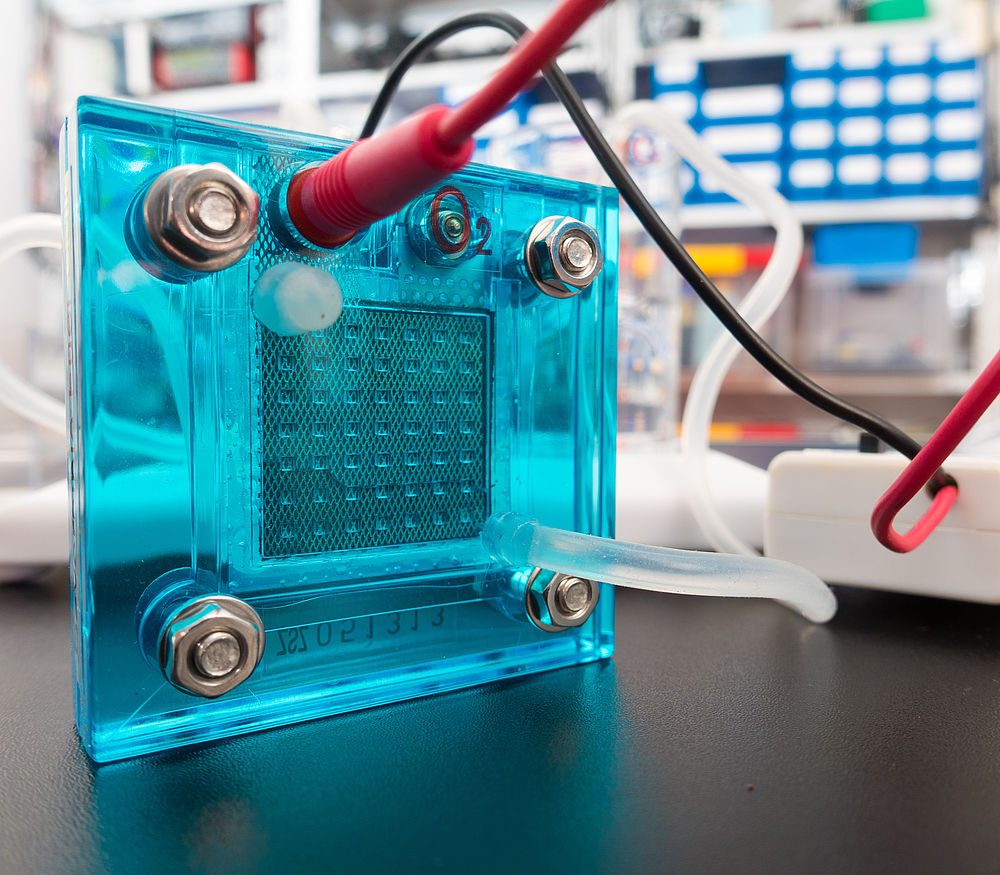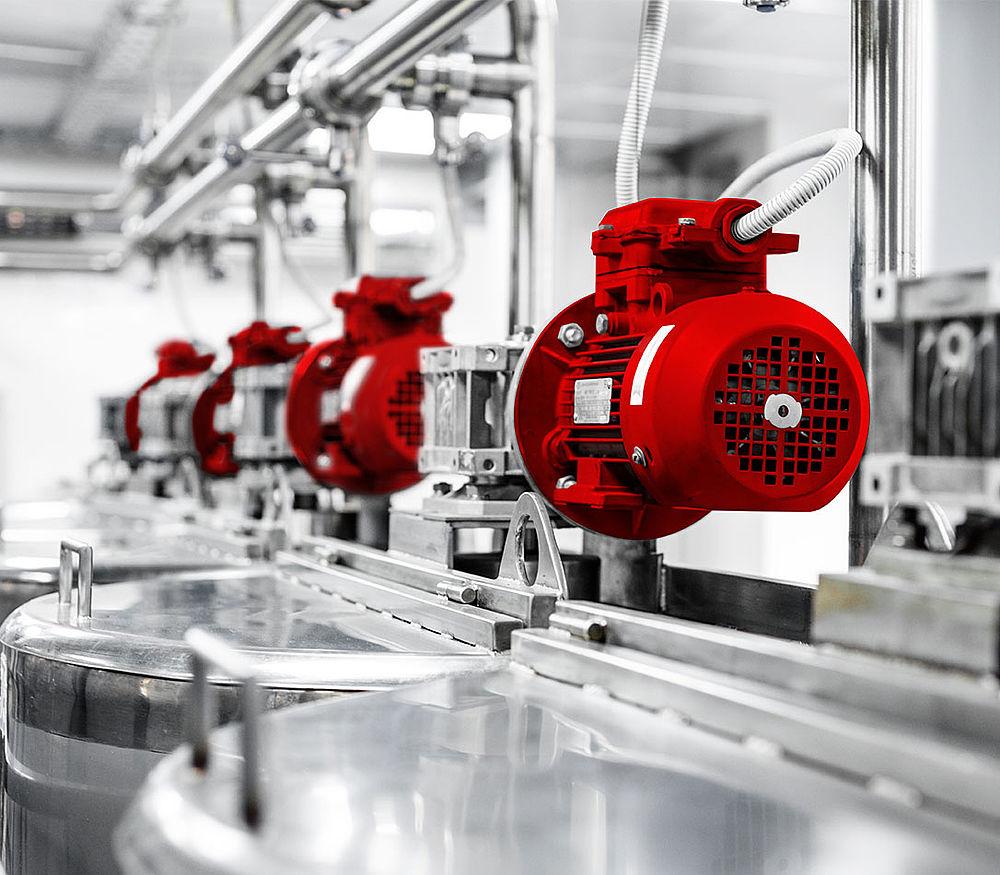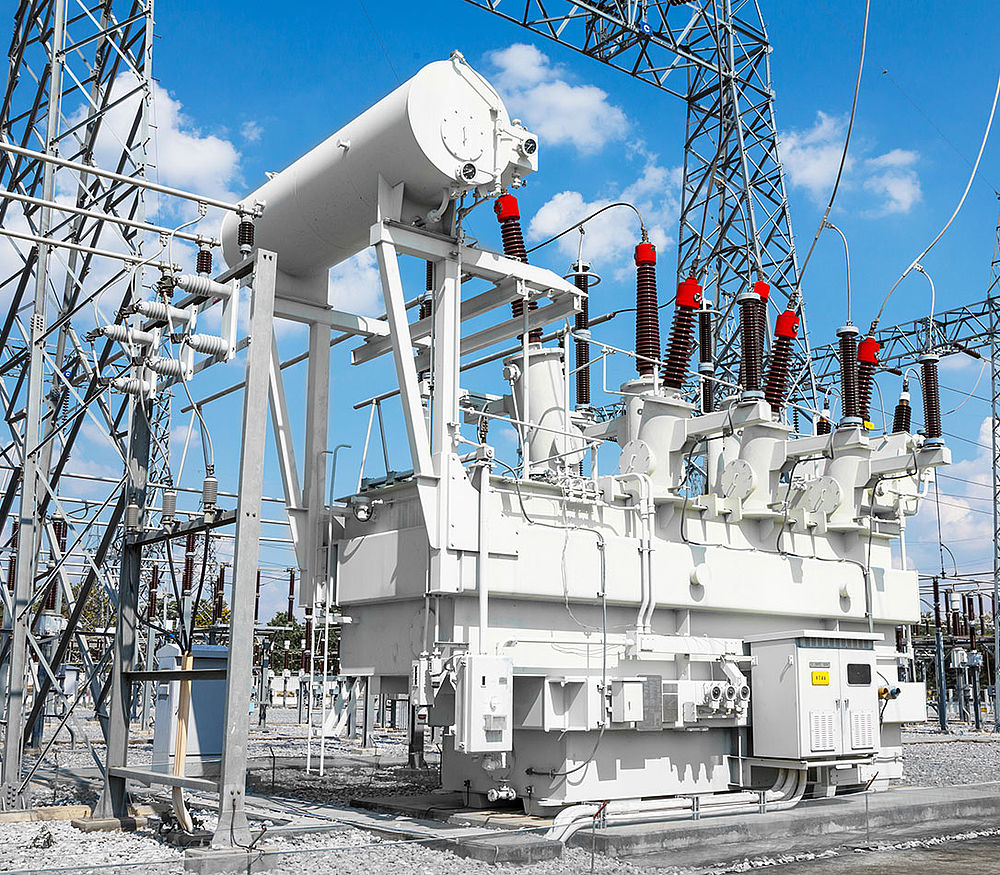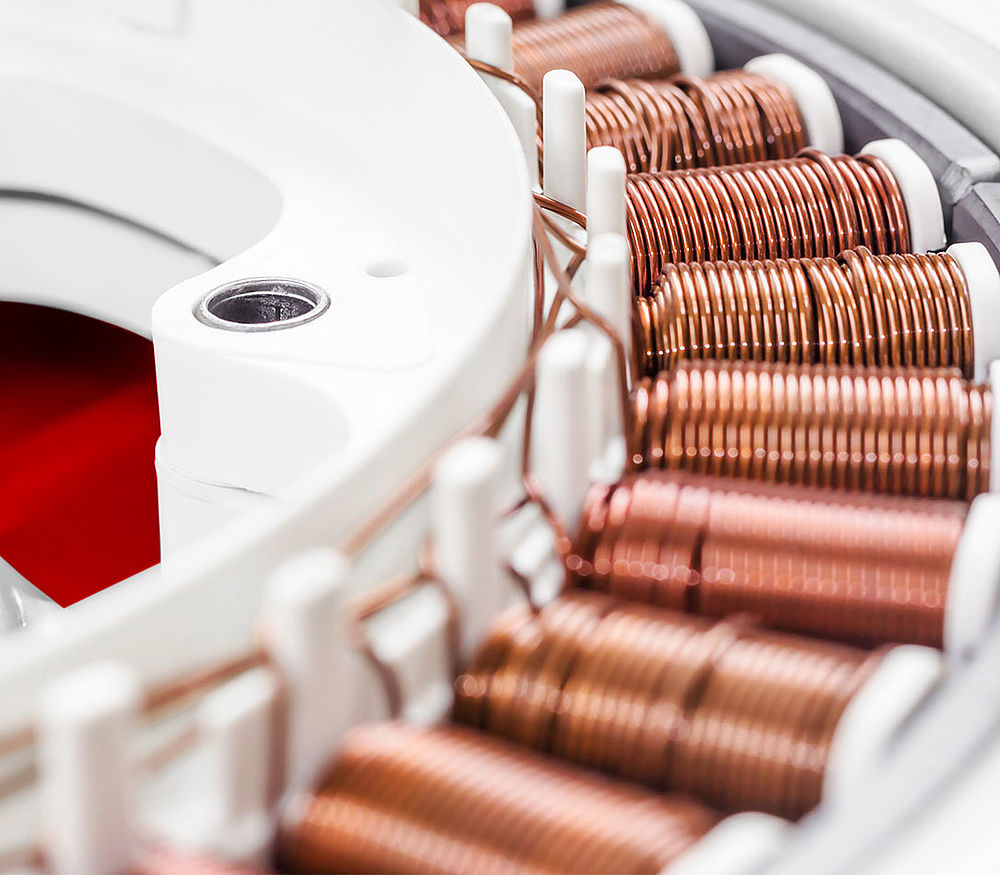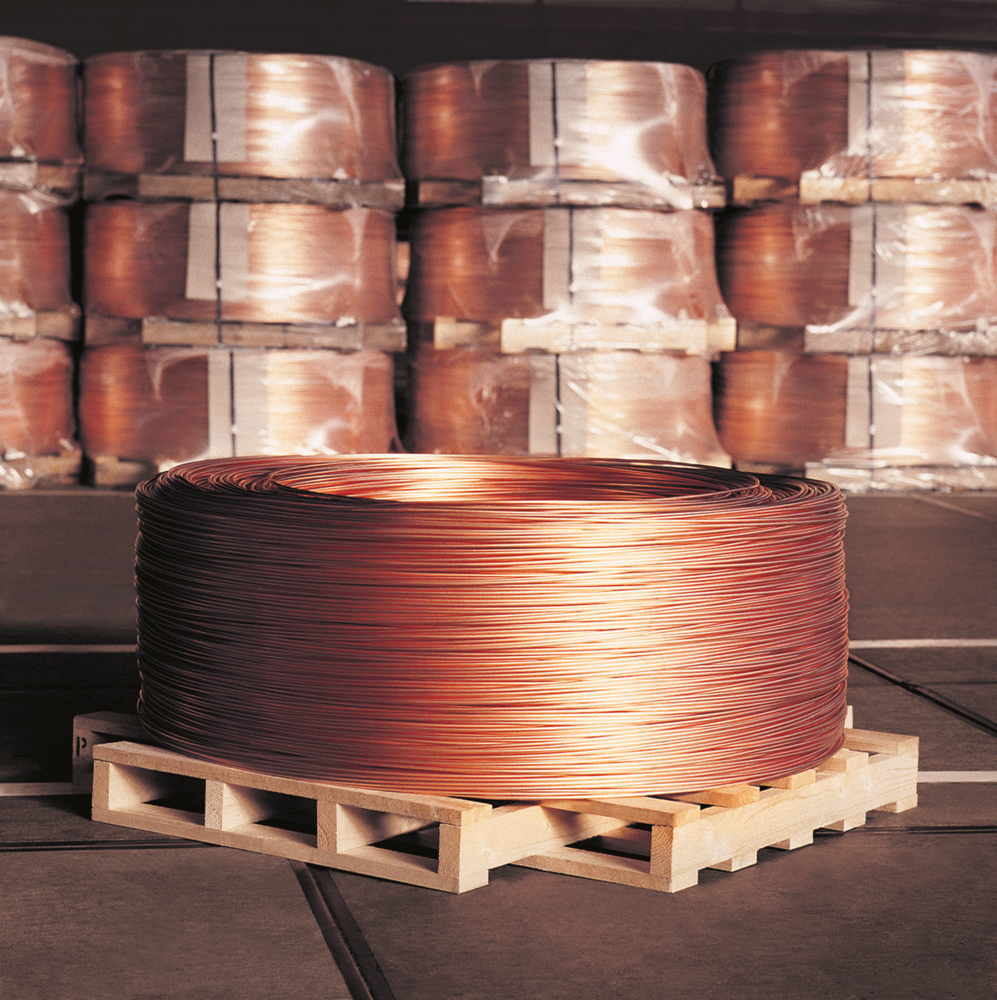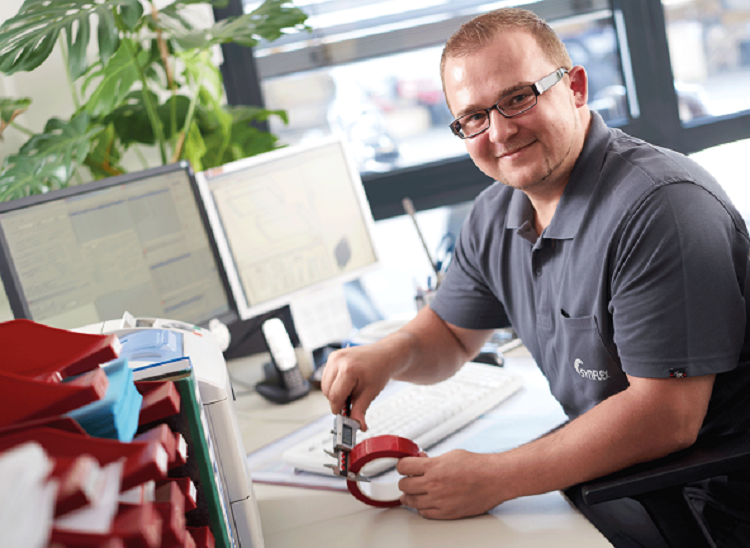SynChem – Resins & Varnishes WEVOSIL 26040 FL
Solvent-free, two-component silicone-based gap filler with high thermal conductivity .
The resulting soft-elastic moulding material is characterized by good low-temperature flexibility and excellent behaviour in the temperature shock test. The system contains mineral fillers, which can be abrasive.
Recommended temperature range: -60 °C to +200 °C.
The resin is processed together with WEVOSIL 26040 FL B.
Application
- Pressure-sensitive electrical components
- Complete assemblies in SMD technology
- Thermally conductive adhesive and encapsulation
Standards
- Temperature application range -60 °C - +200 °C
Delivery forms
30 kg containers
Color
WEVOSIL 26040 FL A: Natural
WEVOSIL 26040 FL B: Blue
Storage
Polymer (A-component) and crosslinker (B-component) must be stored dry and at a temperature of 5 °C to 30 °C and not in the open air. The containers should be stored upright and not
directly on the cold floor (floor temperature not below 5 °C).
At temperatures above 25 °C, the settling of the fillers contained in the casting compound is accelerated. The potting compound is then more difficult to homogenize.
Hardening
- Pot life: 50-70 minutes at room temperature, depending on layer thickness and casting volume.
- Curing time: 4 hours at room temperature, or 1 hour at 100 °C
- Final chemical curing: several days at room temperature
Curing notes:
- Excessive humidity has a damaging effect on the uncured compound. If necessary, curing should take place in an air-conditioned room, a container with low humidity or in an oven.
- Curing at an elevated temperature (50 - 100°C) accelerates the curing reaction and can influence the adhesion of the potting compound to the walls of the component.
- The WEVOSIL 26040 FL casting compound reaches its final hardness after a few days at room temperature.
- After approx. 4 hours curing at room temperature (or 1 h @ 100 °C) approx. 90 - 95 % of the curing takes place. To achieve the final hardness, post-curing can then be carried out for 2 hours at 165 - 180 °C. However, this last step is not absolutely necessary. After a few days, the casting compound reaches its final hardness even at room temperature (depending on the system).
- Electrical tests of the component quality can usually be carried out after the first curing (4 hours at room temperature or 1 h @ 100 °C).
Processing
Material Preparation:
- Pay attention to the FIRST IN - FIRST OUT principle when taking goods from the warehouse.
- The mixing ratio should be checked and documented daily before starting production. It may also be advisable to check the mixing ratio after short breaks in production. The density (dosing of the components via the mixing head) should also be checked.
- The mixing ratio must be exactly as specified in the data sheet. The deviation for silicone potting compounds must not exceed ±1 % in relation to both components (example: with a mixing ratio of 100:100, the “tolerable” deviation is 101:99 to 99:101). Excess crosslinker can react with the moisture in the air, which can lead to the formation of bubbles. Excess polymer component, on the other hand, acts as a plasticizer. A deviation from the ideal mixing ratio with the aim of changing the properties of the molding material is not permitted.
- Bring the goods from the warehouse to the production area in a timely manner so that the product's temperature can adjust - cold material is more viscous, flows poorly = changes in pressure on the system, potential mixing problems.
- Store goods correctly in the production area (not on cold floors or in draughty areas, but on drip trays / pallets)
- Clean the lid before opening the original container (impurities such as wood splinters can otherwise get into the A component and cause blockages in the system)!
- The filler in both components can sediment. The components must therefore be homogenized (stirred) before use. Stirring is carried out with a special stirring unit (e.g. cup or helix stirrer), a drill with stirring attachment or manually with a stick or spatula (no rough wood, splinters could get into the casting compound). Avoid stirring in too much air and thus humidity. The deposited filler must be completely homogenized (especially sediment). Without sufficient homogenization, there will be too much polymer (reactive component) in the upper half of the container and too much filler in the lower half. In this case, over- or under-crosslinking may occur during processing and the resulting cured material will have different mechanical, thermal and electrical properties than those specified in the technical data sheet..
- Even filler-free potting compounds contain small amounts of solids (pigments) that can sediment. Therefore, all potting compounds must be listed before use
- Homogenization should always be carried out before dispensing the casting compound if the last dispensing was not carried out on the same day. Barrel goods must be stirred at intervals in a special barrel stirring and pumping station.
- Both components must always be protected from moisture. Frequent opening of the can/container and repeated homogenization leads to moisture absorption of the components. This moisture damage to the components cannot be detected immediately, but only during or after curing (bubble formation / non-crosslinked areas).
- If necessary, air that has been stirred in after homogenization can be removed in a vacuum. To do this, the components are placed in the storage containers and degassed under vacuum (50 - 100 mbar is sufficient for most casting resins) for approx. 10-20 minutes.
The following also applies to manual processing:
- If the material is to be processed in partial quantities, it is advisable to divide the casting compound into several small dry containers after homogenizing it once.
- After homogenization, the stirred-in air should be removed for 3 - 5 min in a vacuum (50 - 100 mbar). This is particularly recommended for potting compounds with a viscosity above 3000 mPas.
Component Preparation:
- If components are cast, it is advisable to dry them before casting. Drying for 1 - 2 hours at 60 - 80 °C in an oven is sufficient. Every metal or plastic surface has surface moisture at room temperature. This can lead to the formation of bubbles or curing problems during the hardening of the casting resin. For this reason, please carry out preliminary tests to determine the necessary pre-drying of the component.
- The sensitivity of casting compounds and hardeners to moisture and the moisture content of various plastic surfaces varies greatly. Please consult SynFlex for specific cases.
- Preheating the components has a positive effect on the flow behavior of the potting compound and thus also on the wetting of the substrate surface
- The warm component heats the potting compound, which reduces the viscosity. The potting compound flows faster into the component and displaced air can rise more quickly. Component temperatures of up to 100 °C are not harmful to the not yet cured potting compound.
- A preheated component also accelerates the curing of the casting compound. The preheating temperature must be determined by means of preliminary tests, as some systems have a processing time of over 90 minutes at room temperature and only a few minutes at 100 °C.

You have questions according to our resins and varnishes or want to send an inquiry?
Our product manager will be happy to help you.
Technical data
| Property | Unit of measure | Condition | Value | Test method |
|---|---|---|---|---|
| Mixing ratio | weight-% | 100:100 | ||
| Pot lilfe | min | 25 °C | 50-70 | |
| Curing time | h | 25 °C | 4 | |
| Curing time | h | 100 °C | 1 |
| Property | Unit of measure | Condition | Value | Test method |
|---|---|---|---|---|
| Density | g/cm³ | WEVOSIL 26040 FL A | 3.08-3.12 | |
| Density | g/cm³ | WEVOSIL 26040 FL B | 3.08-3.12 | |
| Viscosity | mPas | WEVOSIL 26040 FL B / 22 °C | 100,000-150,000 | |
| Viscosity | mPas | 22 °C, WEVOSIL 26040 FL A | 100,000-150,000 | |
| Mixture viscosity | 22 °C | 100,000-150,000 | ||
| Hardness | Shore 00 | Shore 00 | 60-80 | ISO 48-4 |
| Water absorption | % | 30 d, RT | 0.1 | |
| Elongation at break | % | 30 | ISO 527-2 |
| Property | Unit of measure | Condition | Value | Test method |
|---|---|---|---|---|
| Thermal class | DIN EN 60085 | |||
| Glass transition temperature | °C | -100 | TMA | |
| Thermal conductivity | W/m*K | 4.0 | ISO 22007-2:2008 |
| Property | Unit of measure | Condition | Value | Test method |
|---|---|---|---|---|
| Dielectric strength | kV/mm | 20 | DIN EN 60243 | |
| Dielectric constant ε at 50 Hz, 23 °C | 7.0 | DIN EN 60250 | ||
| Dielectric constant; at 1 kHz, 23 °C | 6.78 | DIN EN 60250 | ||
| Dielectric constant ε at 1 MHz, 23 °C | 6.51 | DIN EN 60250 | ||
| Volume resistance specific at 23 °C, 50 % r.h. | Ωxcm | 10^13 | DIN EN 62631-3-1:2016 | |
| Surface resistivity at 23°C and 50 % r.h. | Ω | 10^14 | DIN EN 62631-3-2:2016 |
